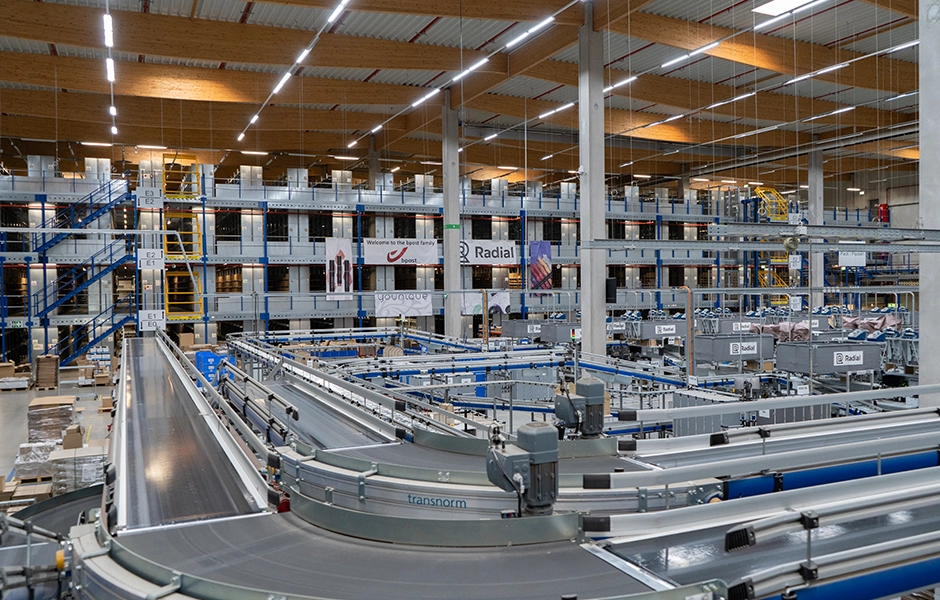How Real-Time Inventory Visibility Enables E-commerce Retailers Deliver Better Customer Experiences
In today’s unpredictable retail landscape, real-time inventory visibility isn’t just a nice-to-have—it’s a competitive necessity. Retailers that can track stock across all channels are better positioned to deliver seamless omnichannel experiences, win over today’s demanding shoppers, and build lasting loyalty.
Retailers that have real-time inventory visibility are better able to deliver true customer experiences—an essential part of closing the deal with today’s shoppers and building their loyalty. With supply chain disruptions, market changeability, shrinking margins, and volatile inflation rates, retailers are focused on getting better control over their e-commerce operations, which includes end-to-end inventory management. Inventory visibility is crucial to truly streamline the shopping experience and meet customer expectations.
But how do you attain it?
Inventory visibility and order visibility
Inventory visibility is the ability to understand and track inventory status and location. Real-time inventory visibility requires automated systems and plays a key role in omnichannel shopping experiences since it is used to provide customers with product availability information when searching for products and making buying decisions.
Retailers that can gain real-time inventory visibility across their supply chains drive smoother workflows and processes, as well as better alignment across manufacturer, supplier, warehouse, fulfillment center, carriers, and reverse logistics that enable omnichannel experiences. Order visibility refers to being able to see when orders are placed, fulfilled, and shipped.
E-commerce retailers that use a cloud-based order management system (OMS) as part of their inventory management strategy are able to create order visibility and inventory visibility from the same platform. Both improve the customer experience by creating a smoother, more accurate, and timely shopping and fulfillment experience.

Radial Europe, fulfillment at the Halle site, Germany
Inventory management
Inventory management involves strategies and systems to monitor inventory for forecasting, purchasing, cost control, and tracking overstocks and reverse logistics. Retailers use inventory management software to create visibility, as well as improve their data management and complete audits to ensure accuracy.
Benefits of real-time inventory visibility
Ultimately, inventory visibility is meant to improve customer satisfaction. By having a clear line of sight on stock, retailers can be accurate in their product availability data and estimated fulfillment and shipping times. They can also be more accurate and timely when ordering inventory.
Additional benefits include:
- Proactively responding to inventory delays or availability issues to adjust fulfillment decisions
- Understanding best-selling products and high and low demand inventory for peak seasons
- Having more accurate inventory counts with automated, real-time tracking of SKUs
- Refining store fulfillment stock and restock counts
- Improving the reverse logistics process
More business reasons
In addition to improving customer experience and operations, e-commerce retailers that establish inventory visibility are able to improve:
- Security and controls: Less inventory loss and better loss prevention.
- Order and fulfillment optimization: More accurate tracking of on-hand stock, special orders, and popular or excess inventory, as well as current inventory levels and allocation among stores and e-commerce distribution centers.
- Business resilience: Better ability to adapt to supply chain disruptions and changes in market conditions, more accurate forecasting and tracking of out-of-stocks, and better safety stock levels to meet customer demands.
- ROI and revenue: Create realistic levels of stock, less inventory costs, improved profitability, and less money tied up in warehouses.
Despite the benefits, however, many retailers struggle with realizing real-time inventory visibility.
What holds retailers back?
Retailers struggle with achieving real-time inventory visibility for a variety of reasons. Common factors include:
- Legacy systems that are difficult to integrate with cloud-based systems
- Relying on manual inventory processes
- Disconnected systems, departments, functions, and operations
- Inability to automate or slow-to-automate processes and workflows
- Lack of cooperation across the supply chain in integrating inventory data
- Lack of modern automated inventory tracking and control systems
Ways to create inventory visibility
Retailers that want to create inventory visibility need to focus on driving digital transformation by moving systems to the cloud, performing data and application integrations, and deploying an OMS that integrates with core systems like enterprise resource planning (ERP) systems to sync all data into one source of truth.
Integration is essential to enable software and systems to communicate and share real-time data, as well as create single dashboards that make it easy to quickly see inventory, track metrics, improve inventory planning, see where inventory is in the order fulfillment process or if it’s in transit, and to ensure that everyone has access to the same data to make the best operational decisions.

How Radial helps create real-time inventory visibility
Radial provides outsourced e-commerce order fulfillment services, including store fulfillment (such as supporting buy online, pickup in store (BOPIS) and curbside pickup), and it also provides e-commerce retailers with modern, cloud-based omnichannel technology designed to support their fulfillment processes end-to-end.
Contact Us (EUR)
By submitting this form, you agree to our friendly privacy policy.

